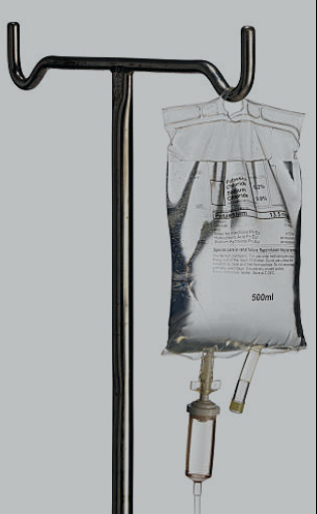While being a generally high-volume package configuration used for decades, the application of  deterministic container closure integrity test methods to these flexible, often large volume systems, has increased in recent years. A combination of increased adoption of current industry best practices, changing regulation, and a proliferation of small-batch cell and gene therapies stored, processed, or transported in these packages has in turn yielded increased inquiries regarding deterministic test method validation. However, flexible bags have numerous challenges they present for the application of CCI tests.
deterministic container closure integrity test methods to these flexible, often large volume systems, has increased in recent years. A combination of increased adoption of current industry best practices, changing regulation, and a proliferation of small-batch cell and gene therapies stored, processed, or transported in these packages has in turn yielded increased inquiries regarding deterministic test method validation. However, flexible bags have numerous challenges they present for the application of CCI tests.
Historical Context of the Challenges with IV Bag Systems:
Flexible IV bag systems have historically been one of the more challenging package systems to develop and validate leak tests for. Their flexible and polymeric nature makes them conducive to expansion, permeation of gases, and outgassing under vacuum – attributes which impose limitations for many modern deterministic leak tests. In addition, the large volume (relative to other parenteral package forms) and variety of ports and tubing connections further limit traditional approaches.
Limiting Variables in the Context of High Voltage Leak Detection:
The primary limiting factor in the application of HVLD appears to be size of the package and availability of lab-scale solutions to accommodate such samples. Theoretically, as liquid filled packages, they would be candidates for HVLD testing. However, the physical limitations, and questions about the impact of the plastic material, often rules HVLD from a feasibility perspective.
Limiting Variables in the Context of Headspace Analysis:
The large volume of IV bags are not conducive to placement into modern laser-based headspace analyzers, which are typically made to accommodate vials and other parenteral configurations. For this reason alone, it is typically not considered even from a feasibility standpoint.
Limiting Variables in the Context of Helium Leak Detection:
With helium leak testing, a package is filled helium gas and subjected to vacuum, where escaping helium is quantified. Due to the molecularly porous nature of flexible polymeric materials, and the small, light nature of helium, permeation through the materials makes helium leak testing difficult. This is exacerbated by large surface areas of large IV bag systems. Compared to a glass vial package system, for example, baseline helium leak rate due to permeation may mask smaller defects of concern.
Limiting Variables in the Context of Vacuum Decay:
As with other pressure-based analyses, application of vacuum decay to large flexible systems is limited by  sample size and materials. In vacuum decay, a sample is subjected to vacuum, and the pressure rise inside of the vacuum chamber over time is measured. In a non-leaking sample, a certain amount of pressure rise (vacuum decay) will occur. It is expected that over that same period of time, a leaking package would yield a greater pressure rise in comparison.
sample size and materials. In vacuum decay, a sample is subjected to vacuum, and the pressure rise inside of the vacuum chamber over time is measured. In a non-leaking sample, a certain amount of pressure rise (vacuum decay) will occur. It is expected that over that same period of time, a leaking package would yield a greater pressure rise in comparison.
However, aforementioned molecularly porous surface area and outgassing of gas trapped in and on package materials can “mask” smaller defects. Vacuum decay sensitivity, being a pressurebased test, is also impacted by volume. Consider the following analogy: your sink has a leak. It is dripping at a constant rate based on the severity of the leak. The drips of that leak will fill a small bowl much quicker than a 5-gallon bucket. The same applies to vacuum decay. A 5um leak leaking into the small vacuum chamber volume of a 10mL vial will increase pressure much faster than that same 5um leak in a vacuum chamber large enough to fit an IV bag.
Because of volume dependencies, vacuum decay chambers are typically manufactured to very tight  dimensional specifications, limiting the above phenomenon. This typically dictates the need for individual chambers based on package size and geometry. IV bags introduce another challenge to this in that they have a wide variety of ports and accessories that may introduce variables even amongst bags of the same size. However, pressure-based analyses typically represent the best path forward from a feasibility perspective, often representing the best mix of sensitivity and realistic application given the limitations imposed by these system types. As with all deterministic methods, method development and validation is required to optimize and establish the method’s capability and suitability for routine use.
dimensional specifications, limiting the above phenomenon. This typically dictates the need for individual chambers based on package size and geometry. IV bags introduce another challenge to this in that they have a wide variety of ports and accessories that may introduce variables even amongst bags of the same size. However, pressure-based analyses typically represent the best path forward from a feasibility perspective, often representing the best mix of sensitivity and realistic application given the limitations imposed by these system types. As with all deterministic methods, method development and validation is required to optimize and establish the method’s capability and suitability for routine use.
How to Overcome these Challenges – The CS Analytical Solution:
To overcome these challenges, The CS Analytical CCIT Team has developed new approaches and test methods that enable a deterministic method to be effectively used and validated to a defined micron leak level. While in some cases, USP 1207 documented methods such as vacuum decay may still be viable, in cases where these limiting factors play a critical role in method selection, the CS Analytical Team has developed methodologies that can be customized to your specific IV Bag configuration that still offer the ability to use positive controls and validate to specific micron level leak rates.

